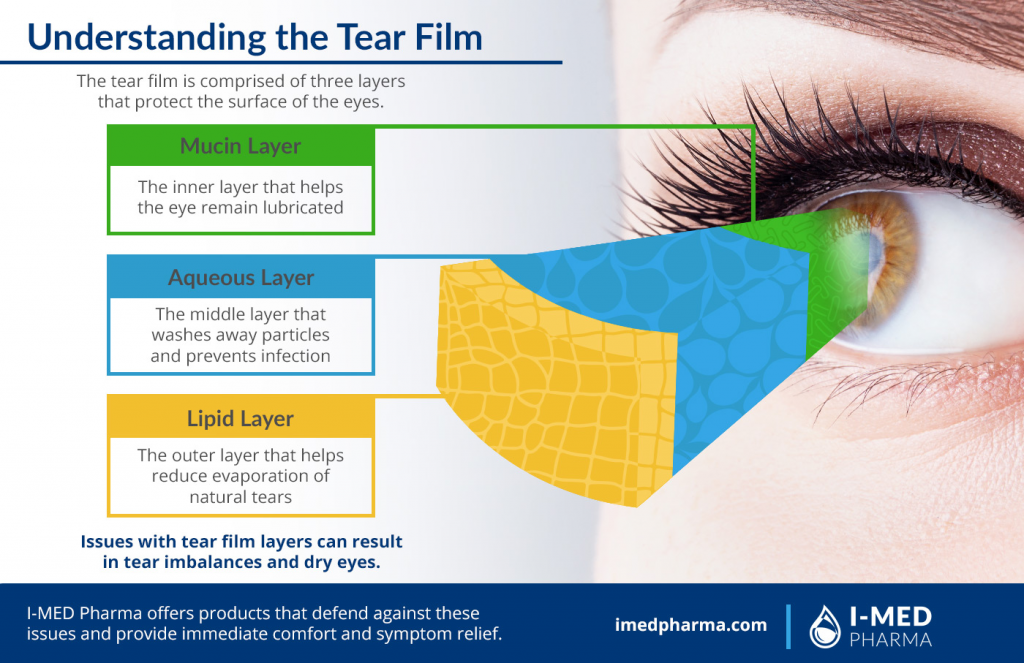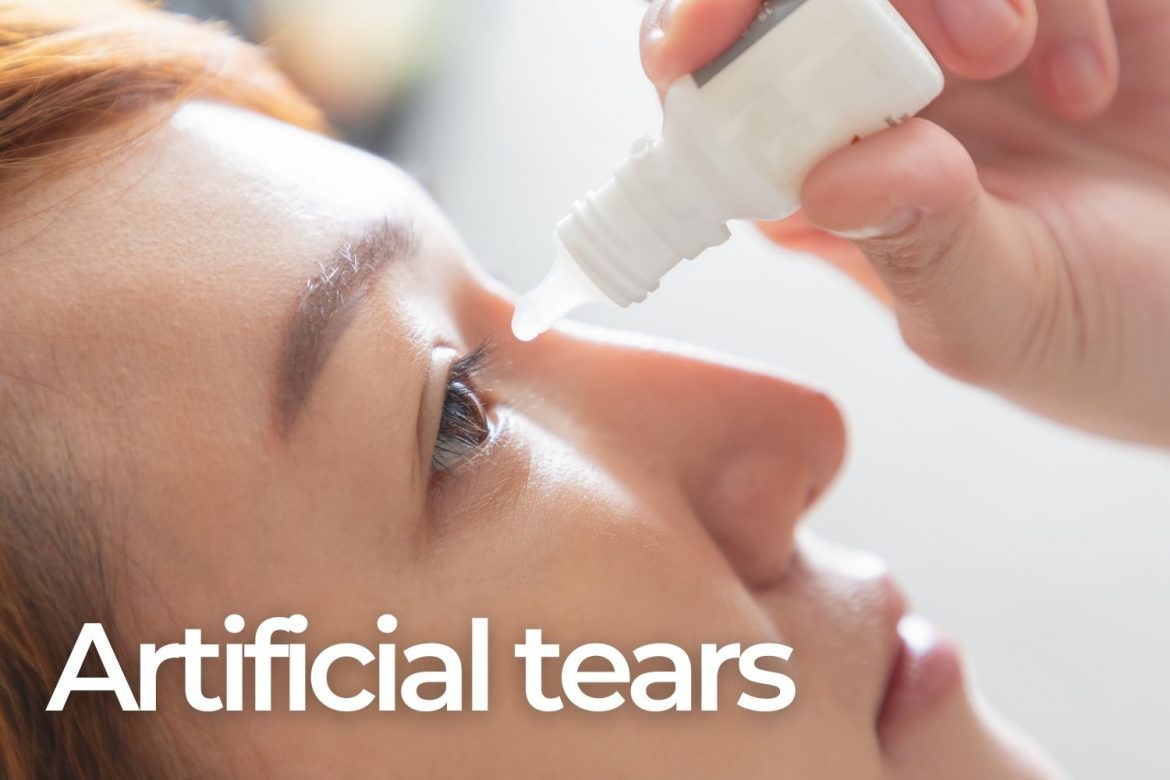1080 total views , 10 views today
Take a trip to the pharmacy for artificial tears—or a click to our dry eye relief page—and you’ll find many different types. If you’re armed with a doctor’s recommendation, or knowledge of the products, you’re likely to pick the cheapest one or the generic store brand.
But not all artificial tears are created equal…
- What ocular conditions can artificial tears treat?
- What should you look for when purchasing an artificial tear?
- Which type of artificial tear is best?
Let’s look at the types of artificial tears and some recommendations which should help you make the right choice.
Use of artificial tears
Artificial tears are primarily used to treat dry eye, but eye doctors also use them to support the healing of a corneal abrasion or another injury, manage eye pain and inflammation, treat conjunctivitis and keratitis, use with contact lenses, and remove foreign agents from the eye.
Studies show that artificial tears can improve the symptoms of dry eye if dosed four times per day. Doctors recommend patients use them in the morning, at lunch, dinner, and at bedtime, but it may take months for symptoms to resolve, along with the use of other therapeutics.
Learn more about treatments for dry eye here.
Types of dry eye
Knowing which type of dry eye you have will be helpful when choosing an artificial tears product. There are two types of dry eye: aqueous deficiency and evaporative. Most people have a combination of both types.
- Aqueous deficiency means your eye does not produce enough tears.
- Evaporative means the tears evaporate from the surface because the tear film is unstable.
When you blink, your lid pushes your tears over the surface of your eye like a windshield wiper. The tear film consists of an aqueous-mucin layer produced by the lacrimal glands, mucin secreted by the goblet cells, and covered by a lipid layer.
This combination of proteins, glycoproteins, and lipids in tears is imperative to maintain a balanced, well-lubricated tear film and optimal visual clarity. The oil component of the tear film is produced by the meibomian glands at the base of eyelashes. If the meibomian glands do not function correctly, there is a lack of oil in the tear film causing the tears to evaporate off the eye. Most dry eye is due to tear evaporation.

Types of tears
There are many different types of artificial tears: preserved vs. non-preserved, liquid vs. gel, and oil vs. aqueous.
Preservative vs. preservative-Free
Preservative-free artificial tears have fewer additives. If you have moderate to severe dry eye, the preservatives can worsen your dry eye.
A preservative called benzalkonium chloride (BAK) is most common. Almost all artificial tears are multidose and are preserved from contamination against pathogens like bacteria. Preservatives may cause an allergic response or a toxic reaction if used chronically. BAK specifically has been found to cause inflammation in the cornea, conjunctiva, and lens of the eye.
Preservative-free artificial tears typically come in a small vial versus a bottle. These vials can be used the next day if some fluid remains but should not be used if they have been opened for several days. These are always recommended by doctors for dry eye patients, or post-surgical patients (cataract, LASIK).
Liquid vs. gel-based tears
Liquid tears tend to be thinner (like a drop of water) compared to gel-based which are stickier and thicker. For most patients, liquid tears are best during the day while gel may be preferred at night.
The biggest advantage of a liquid tear over a gel is that it doesn’t make your vision blurry, and some types can be used with contact lenses. A gel tear will result in blurry vision for several minutes, but the drop stays on the eye longer because of the thicker consistency. For patients who have more severe dry eyes and/or their eyes dry out overnight, gel-based tears are optimal and improve symptoms more quickly.
Ointments are a third category of artificial tears which are mostly used at night. Ointments are thicker and stay on the eye even longer than gel tears.
Lipid vs. aqueous-based
The goal of an artificial tear formulation is to supplement the deficient part of the tear film and lubricate the ocular surface providing symptom relief and reducing corneal damage. Since most dry eye is evaporative, a lipid-based tear is preferable for these patients. The lipids in the artificial tears are used to supplement the lipids produced by the meibomian glands. Studies indicated that lipid-based drops are both effective and safe for patient use.
Active ingredients in artificial tears
What makes an artificial tear effective at treating dry eye? Artificial tears can be grouped into four categories based on their active ingredients.
1. Carboxymethylcellulose (CMC)
Refresh Optive® and Thera Tears® are examples.
2. Hypromellose and Dextran
All types of Genteal and Systane lubricant eye gel® are examples.
3. Propylene glycol, polyethylene glycol, and glycerin
Systane Balance®, Blink Tears®, and Soothe® are popular options.
4. Povidone and polyvinyl alcohol
FreshKote® is an example.
Artificial tears also contain pharmaceutical and food additives including osmoprotectants, humectants, Hydroxypropyl Guar gum, and oils.
Osmoprotectants
Osmoprotectants are agents that protect cells against cell injury. These actively protect the cells of the cornea.
Humectants
Humectants are agents that keep water in the cells of the eye. Hyaluronic acid acts like a humectant which can bind water multiple times the amount of its weight and can be found in many tear brands.
Hydroxypropyl guar gum
Hydroxypropyl guar is derived from beans and when instilled, forms a soft gel that mimics the mucin layer of the tear film.
Oils
Flaxseed, castor, and mineral oil mimic the lipid layer of the tear film, stabilizing the tear film and preventing evaporation.
Conclusion
Artificial tears with combination formulations are more effective than single active ingredient artificial tears and those containing polyethylene glycol (Systane, Blink, Soothe) are more effective than those containing carboxymethylcellulose/carmellose sodium and hydroxypropyl methylcellulose.
For patients with evaporative dry eye disease, lipid-based artificial tears in higher concentrations are most beneficial.
Schedule an eye exam for help determining the best tear combination for you. Ask your doctor about samples so you can try a brand prior to buying a supply.


